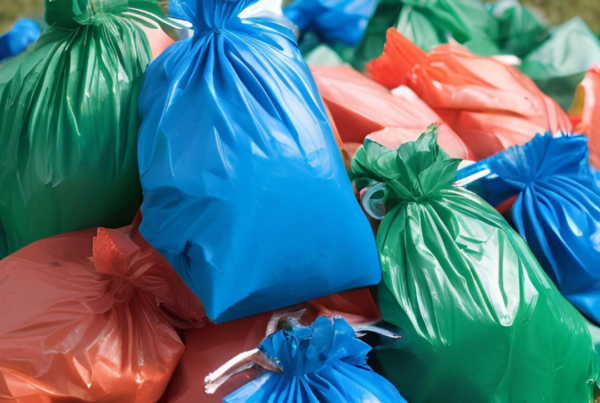
If you read the title of this post, you might think it’s about treatment for erectile dysfunction (ED). Nope, it’s definitely not. We’re sure your spam folder is already full of that. This post is about hardening or firming up your dog’s wet stool.
That said, we’ve all seen it — and, unfortunately, smelled it — the unformed, semi-liquid, ultra stinky, almost-impossible-to-pickup dog bomb. Yuck! No one ever looks forward to the chore of picking up where their pet left off. No one except us, that is. And, it’s all the more reason to put it off when it can’t just quickly be bagged or scooped up. Dealing with this is just down-right disgusting! However, it must be done… all bombs away!
Let’s take a second and discuss why this problem occurs in the first place. Logic and basic science tell us, once we understand a problem or issue, we can usually find a solution or remedy. For this particular problem, put in it’s simplest form — what goes in must come out. Simple, right? If you feed your dog wet — usually canned dog food — you will see the same consistency on the receiving end. Let’s just hope it happens to be on your grass and not the concrete patio area, deck or special landscaping you may have in your yard. However, there are other issues that contribute to this problem, and, it’s not just wet food.
The quality of your dog’s stool is an excellent indicator of gastrointestinal health, so when stools turn runny and funky, it’s time to give Rover something to tame his upset stomach.
Whatever it is that’s ailing your dog’s digestion – whether it’s an unidentified edible object (UEO) he/she picked up off the street on a walk or found in the yard, the unfortunate side effect of a prescription medication, or just the food he’s being fed daily – things can usually be corrected with slight dietary adjustments. The best part is, what works for dogs also works for humans, too!
OK, so, let’s help you get your dog’s $#it together! Pun definitely intended.
STOP feeding your dog wet, canned/pouched dog food — or anything not introduced in a solid state. Remember that wet diets (canned or pouched) contain around 75% water, whereas dry diets are around 10% moisture. This higher moisture content translates into wetter, more bulky stools. This will make a big impact on the volume (reduces it) and moisture content (much harder and firmer) of the stool. Most of the time, incorporating just this small change will solve the issue, or at least firm it up to a point where it can actually be picked up and discarded.
Here’s what to do instead: take your time to switch your dog over to a new diet — usually a minimum of 4 – 5 days — gradually introducing the new diet into your dog’s existing food and cutting back on the original diet. This gives the bowel flora and fauna that aid digestion a chance to adapt.

If switching from wet to dry food doesn’t work, try canned pumpkin. Yes, the same stuff you eat in pumpkin pie on Thanksgiving. You can find it at any supermarket or Target stores. Organic options are available as well, but will cost slightly more and possibly harder to find. There’s also brands (like the one shown in image above) that are manufactured/distributed specifically for pets. They will cost a bit more as well.
A few tablespoons of this creamy, orange stuff, added to your dog’s food, will help soothe digestive upset and firm up his/her stool wonderfully. There’s no need to heat it up or do anything else to it – it’s already pre-cooked and ready to serve. Most dogs love the taste, but if you want to make pumpkin extra-palatable, add a dash of ground cinnamon as this will not interfere with the pumpkin’s stool-hardening abilities, and it adds a nice flavor.
Of course, choosing a well-balanced diet has its benefits. Do this, by looking for a food(s) that lists meat as the main ingredient, but actual “meat” and not “meat derivatives”, “meat offal” or “meat by-products”. (OFFAL are the parts of an animal which are used as food but which are not skeletal muscle. The term literally means “off fall”, or the pieces which fall from a carcass when it’s butchered. Originally the word applied only to the entrails. It now covers insides including the HEART, LIVER, and LUNGS [collectively known as the pluck], all abdominal organs and extremities: TAILS, FEET, and HEAD including BRAINS and TONGUE. In the USA the expressions “organ meats” or “variety meats” are used instead.)
What to do instead: choose white meats (low fat) such as chicken, turkey or white fish. Look for a low number of ingredients, since the food is likely to contain less processed ingredients and preservatives, and contain ingredients closer to the actual food. Combine with carbohydrates such as rice, wheat, or oats, rather than soy or soy products.
Lastly, avoid giving your dog fatty foods. Do not give fried, fast foods to your dog. Usually fried commercial fast foods are fried using palm oil; this oil is hard to digest and can easily turn rancid. Bad fats can form a layer in the intestine, causing your dog to have watery stools.
And, as always, with any issues or problems that continue to persist or even get worse, immediately consult with your veterinarian. They will be able to check out your dog and diagnose his/her’s individual issues and set a plan in place to address your dog’s specifically.








